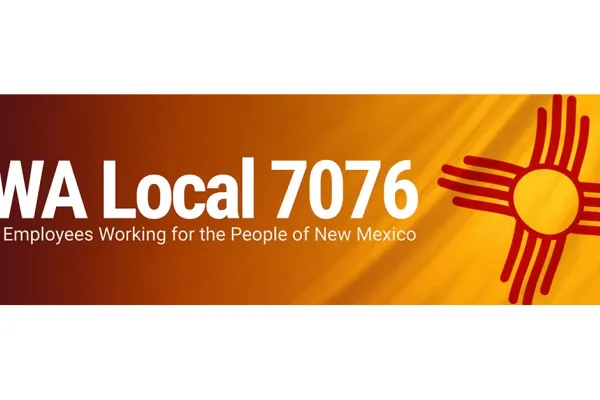AT&T Fiber Deployment in California leaves middle and low-income communities behind
AT&T FIBER DEPLOYMENT IN CALIFORNIA LEAVES MIDDLE AND LOW-INCOME COMMUNITIES BEHIND
Ahead of AT&T’s annual meeting, new UC Berkeley analysis finds stark income disparities in roll out of AT&T’s fiber network and reveals 4 million California homes lack access to AT&T’s high-speed broadband
BERKELEY, Calif. – AT&T is targeting deployment of its all-fiber internet service in California to higher-income neighborhoods, with the median income of the communities in all of AT&T's service areas 34 percent lower than the median income of the neighborhoods where fiber has been deployed, according to a new report releasedTuesday from UC Berkeley’s Haas Institute for a Fair and Inclusive Society.
In a first-ever analysis of AT&T’s fiber-to-the-home (FTTH) service in California, the report shows that the early deployment of the company’s “gigapower” all-fiber service is concentrated in wealthier communities, relegating lower-income neighborhoods to less advanced technologies that offer markedly slower speeds. Drawing on newly-released FCC data, the report highlights disparities in service across 71 percent of California, or 56 California counties in which AT&T provides wireline phone and internet service.
The report also reveals 42.8 percent of California households – approximately 4.1 million homes – in AT&T’s network do not have access to high-speed broadband from AT&T as defined by the Federal Communications Commission, which classifies this service as a 25 Megabits per second (Mbps) download/3 Mbps upload connection. The Communications Workers of America District 9, which represents AT&T’s wireline, mobility, and DirecTV workforce in California, commissioned the report.
The findings suggest AT&T’s fiber deployment will exacerbate the “digital divide” in California. Current disparities in internet access persist along geographic, ethnic and socio-economic lines. Only 43 percent of rural households have access to reliable broadband internet. Similarly, only 56 percent of Latinos and 66 percent of African-Americans have wireline broadband at home, compared to 83 percent of non-Hispanic whites in California.
“Now more than ever, access to high-speed internet is a necessity for all Americans, shaping how we work and learn and giving us the tools we need to get ahead in today’s economy,” said Eli Moore, Program Manager at the Haas Institute and co-author of the report. “Instead of providing equitable access to this invaluable resource, AT&T is unfairly denying millions of middle and working-class Californians the modern technologies needed to thrive in the data-rich, fast-paced digital world.”
In 2016, AT&T began deploying its all-fiber network nationwide, promising to connect 12.5 million customers in 21 states with technology capable of delivering speeds of up to 1,000 Mbps. In California, the company’s VDSL service, marketed as “U-Verse”, remains the most widely-available form of AT&T broadband and uses a combination of traditional copper wire and fiber technology. U-Verse typically delivers speeds of 12 to 18 Mbps, with service boosted to 45 to 75 Mbps in some areas. However, DSL, an older and much slower technology that relies solely on copper phonelines, remains the only AT&T internet option for more than 2.6 million homes in AT&T’s California wireline footprint.
With fiber deployment largely unregulated, the report highlights the stark economic disparities that have characterized AT&T’s early development of its all-fiber infrastructure in California. Findings include:
· The median household income [$67,021] for communities for whom the fastest technology available is AT&T’s U-Verse – which offers maximum service at less than one tenth of FTTH speeds – is 29 percent lower than households with access to an all-fiber option [$94,208].
·The median household income [$53,186] in neighborhoods for whom the fastest option is traditional DSL – which only offers maximum speeds at less than 1 percent of those powered by FTTH – is 44 percent lower than the median income reported by communities with access to all-fiber networks.
· In Los Angeles and San Diego Counties, the median household income of those with access to FTTH is more than twice the median income for households for whom DSL is the fastest available option.
· In Sacramento County, the median household income [$78,036] for communities with access to FTTH technology is 54 percent greater than the median income reported by those for whom DSL is the fastest available option [$50,513].
The report also details barriers to fast, reliable internet in California more broadly. The FCC defines high-speed broadband service as a connection that provides a minimum of 25 Mbps download and 3 Mbps upload speeds (25/3 Mbps). The FCC says these are the minimum requirements for supporting multiple users in a single household engaging in routine activities, such as taking an online course, browsing the web for a research paper or streaming a high-definition movie. The California Public Utilities Commission (CPUC) classifies communities with speeds lower than 6/1.5 Mbps as being “underserved.”
In many cases, AT&T’s broadband service does not even meet the minimum standards outlined by the CPUC: more than 18 percent of households – 1.7 million households -- lack access to broadband speeds of at least 6 Mbps download from AT&T, while nearly 250,000 homes in AT&T’s network do not have access to AT&T broadband at all.
Rural communities in California have been particularly impacted by issues with AT&T’s network:
· In 14 rural counties, including Butte, Calaveras, Tuolumne, Shasta, San Luis Obispo, Humboldt, and Mendocino, virtually no household has access to AT&T broadband at the benchmark speeds outlined by the FCC.
· Between one-third and two-third of households across 14 of California’s rural counties cannot get internet speeds above the lower CPUC benchmark of 6 Mbps download.
“For far too long, our communities, especially rural ones, have been left behind by AT&T,” said Regina Costa, Telecommunications Director at The Utility Reform Network (TURN). “Access to fast, reliable internet is critical for supporting our businesses, improving our schools, and unlocking opportunities for our communities. Californians don’t deserve to be kept in the ‘slow lane’ by a company that has continuously failed to live up to its promises.”
Access to high-speed broadband is critical, with more than half of all internet traffic now characterized as data-intensive video that requires faster connections. Academic studies have also found that expanding access to broadband supports local economic growth and plays a critical role in driving economic mobility and opportunities. While wireless connections are becoming increasingly popular, regulators say these technologies are no substitute for a home wireline connection, which is more reliable and less expensive.
“AT&T workers who are on the frontlines every day have been pointing out how the company leaves many customers and communities behind, and now we see just how far-reaching and disturbing the problems are,” said Tom Runnion, Vice President of CWA’s District 9, which represents AT&T workers on the West Coast. “Despite AT&T’s many promises, it’s clear that the company is not making investments in high-speed broadband that create jobs and that all California communities need. The biggest telecommunications provider in our state can do better.”
The full report, including information on methodology, county-by-county data and policy recommendations to support equitable, affordable access can be found on the Haas Institute website here.
Authors of the report include: Eli Moore, Program Manager at the Haas Institute; Samir Gambhir, Geographic Information Systems Researcher at the Haas Institute; and Garrett Strain, doctoral candidate at UC Berkeley.
UC Berkeley’s Haas Institute for a Fair and Inclusive Society is an independent research institute bringing together scholars, community stakeholders, policymakers, and communicators to identify and challenge the barriers to an inclusive, just and sustainable society in order to create transformative change. Visit haasinstitute.berkeley.edu to learn more.
The Communications Workers of America represents 700,000 workers in private and public sector employment in the United States, Canada and Puerto Rico. CWA members work in telecommunications and information technology, the airline industry, news media, broadcast and cable television, education, health care and public service, law enforcement, manufacturing and other fields. CWA District 9 represents more than 60,000 workers in California, Nevada and Hawaii.
CWA Members Step Up the Fight Against Disability Discrimination



